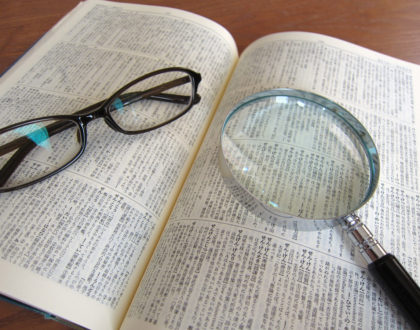The 5 most important everyday expressions at the office

by Madelaine
When working in Japan, fluency in the language is a desirable skill. Especially if you don’t want to step on anyone’s toes with awkward Keigo.
To help you fake it until you make it, here a list of the most commonly used expressions at the office. You will hear them daily and they can be real life-savers. That is, as long as you don’t mix them up with other versions. Using a less polite version can be okay on occasion, but there are also expressions with similar meaning which, when used in a business context can be outright rude.>
コンテンツ
1.お疲れ様です。
お疲れ様です is a phrase you probably hear a lot. If translated, it is often rendered as “Thank you for today/your help.”
It shows appreciation and Japanese people use it as a greeting, to say goodbye, or to thank someone for their work. You will also hear お疲れ様でした。When you ask Japanese people about the difference, some will reply that you use it after a task is finished, but in most cases you can use both versions interchangeably.
It is also used among co-workers or in a circle of friends, for example after finishing a sports game. Pay attention to how the people around you are using it and and say it back when someone says it to you.
When to use:
- ✔ Every time you meet a co-worker at the office during and after work hours.
- ✔ After you finished a job together, or someone did something for you.
- ✔ As a greeting at the beginning of internal messages at work.
- ✔ At the beginning and end of meetings.
- ✔ When leaving the office. お先に失礼します。お疲れ様です。
- ✔ When saying goodbye after a going for drinks or separating at the train station.
NG (no good): X ご苦労様です。(ごくろうさまです)
You might have seen this expression in a manga, or heard someone around you say it. It is only used when talking to someone in a lower position. Saying it to a higher-up or among equals will be considered rude in the workplace. I have never heard anyone use it, not even the CEO. So best stay clear from it and stick to the respectful, お疲れ様です.
2. 承知いたしました。
承知いたしました means as much as “ok,” “I understand” or “I consent.”
This expression is polite, but it is not a humble expression, meaning you show respect without lowering yourself. You can use it in business situations, towards your boss and customers.
When to use:
- ✔ When being assigned a task and accepting it.
- ✔ After being explained something to, showing your understanding.
- ✔ When replying to coworkers who gave you information, a reminder, a task or something in their last message. Often you follow it up, with questions or further confirmations on the matter.
More polite: かしこまりました
This is one level above 承知いたしました。It is both polite and humble and you will mostly hear it said to customers (think of restaurant staff).
NG: X 了解しました or了解です
This one sounds casual and is simply not a polite expression, even though it has the -ますending. Just了解 is often used informally between friends and family.
3. 今お時間をいただいてもよろしいいでしょうか。
With this structure you can ask things like “Can I have a minute” or “Would you have some time today.” It is a polite way to ask someone to give you some of their time. The time is often added at the beginning of the question. For instance: 今 (now), 少々 (a minute), 明日 (tomorrow), 8:30, etc.
Being specific will make it easier to get a positive response because it allows the other party to grasp the urgency of your request and the time it is going to take them. Follow up with a short sentence on what exactly it is you want, and you set the best conditions to get a positive reply.
When to use:
- ✔ Asking a coworker or superior for some time, to ask a question, help you with a task or check something for you.
NG: X 今お時間よろしかったでしょうか
Even native Japanese people frequently mix this one up, so don’t be startled, when you hear it. The past tense doesn’t make it more right, only plain wrong. Best stick to what you learned.
4. こちらでよろしいでしょうか。
Translates to “May I…”, “Is the understand that … correct?” in most cases.
This is the same grammatical form that also caused number three on this list. Working at a Japanese company I find the よろしいでしょうか incredibly useful, as I can add it to most anything I want to ask, without having to worry about whether the question might not be phrased polite enough.
When to use:
- ✔ Asking for confirmation/ opinion. 以下の通りでよろしいでしょうか。
- ✔ Asking for permission. もう帰ってもよろしいいでしょうか。
- ✔ Asking for someone’s time. 今お時間を頂いてもよろしいでしょうか。(see above)
More casual: いいですか
Most of us learn this version early on. It is basic polite, to the point and versatile. よろしいでしょうか is merely the more polite, fail-safe grown-up version of it.
NG: X これで結構でしょうか
This expression is also supposed to check whether something is okay the way it is. The problem is that 結構 is typically used as an answers and should not be used in questions.
5. 申し訳ございません
With 申もうし訳ございません you are saying that you are sorry. A mistake you made, something you didn’t notice, sometimes just said to clear the air, an apology can come in handy on many occasions.
When to use:
- ✔ When you made a mistake.
- ✔ When you are asking someone to fix or do something for you, causing them an inconvenience.
Less formal: 申もうし訳ありません
Polite, a little less humble than the ございません but safe to use among coworkers of similar rank.
NG: X すみません or すいません
Both expressions have the same meaning and are not polite (すいません is the colloquial version of すみません.)
Colloquial language is generally frowned upon in business situations, so avoid such expressions. If you just run into a colleague in the hallway that’s another matter, but it doesn’t cut it as a serious apology. すみません can also be used to thank someone if you asked them a favor for example. In those cases, also use the polite version or a simple ありがとうございます and you will be just fine.
This list is short, but it should cover the basic interactions.
Don’t worry, I will keep adding more contents to survive in a Japanese office. In the meantime, throw in a 宜しくお願い致します at the end of your messages, when introducing yourself or asking someone to do something for you. It can double as “thank you” and “please take good care of me” so this one will never put you in a bad light.
When studying Japanese, I always felt overwhelmed by long lists – 100 useful verbs, 50 business Japanese expression, the complete Japanese grammar, etc. Eventually, I gave up on them, never fully absorbing all that wealth of information.
That’s why here is a short one, you can memorize in one day. More articles will follow, so stay tuned!
Let me know in the comments if what works for me works for you, too. Since we are all different it would be great if you could leave a comment telling me what way is good for you to study Japanese expressions.
Want to learn Business Japanese?
Studying on your own can take you a long way, but also a lot of time. Why not take the short route and combine language learning with a job search in Japan? Linguage Japanese Language School in central Shinjuku specializes in this approach, with a curriculum focused on business communication for Japanese learners of all levels. Check out the website by clicking the link below!
Linguage Japanese Language School
Recommended Posts

How to Get Along with Your Japanese Boss
25 5月 2021 - Work, Working Culture


